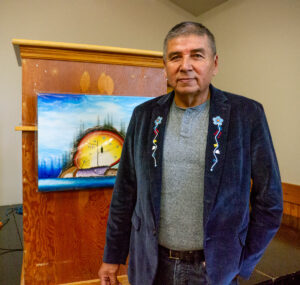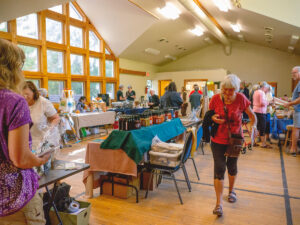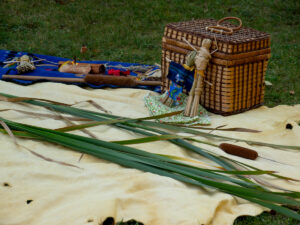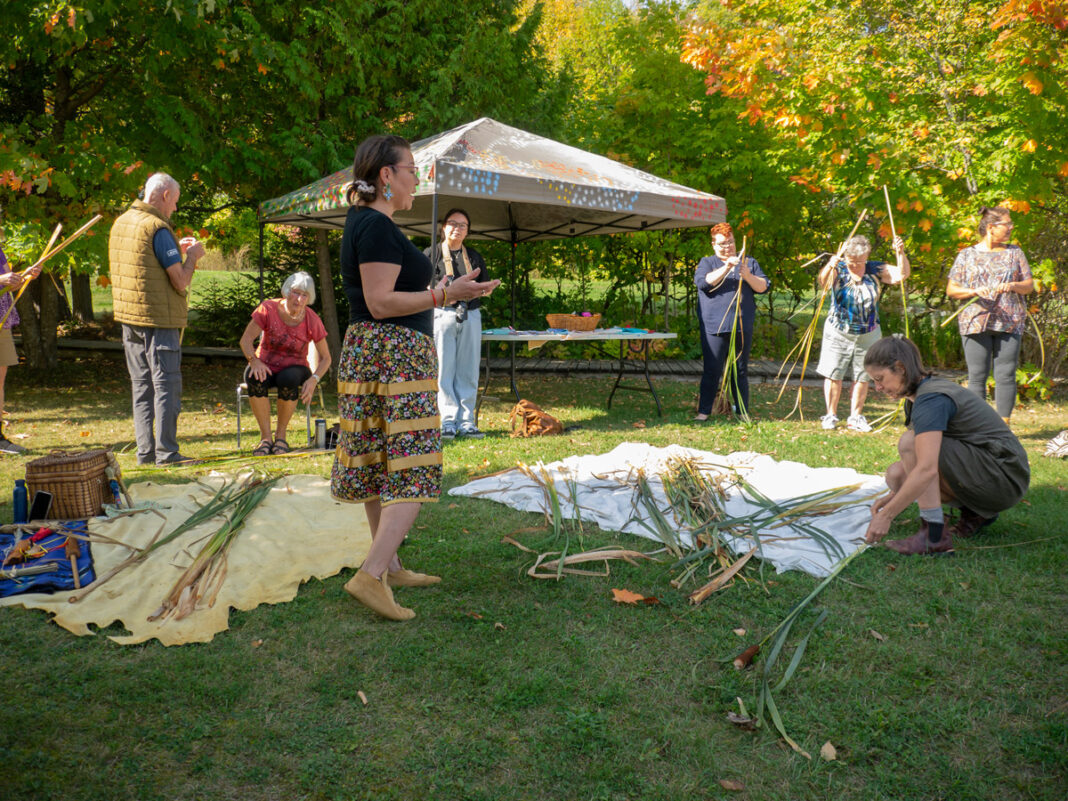by Isobel Harry
KAGAWONG—The drive down the hill into Kagawong, overlooking the shimmering expanse of Mudge Bay on the North Channel, never gets old. The centre of the little village, with the sprinkling of historical frame buildings that include the Anglican church (1898), the old Havelock Hotel (1896), the Lighttower (1894), has at its heart the imposing limestone Old Mill Heritage Centre and Museum (1925).
In addition to the visitor magnets of its shops and services, its weekly summer market and of Bridal Veil Falls, named as “must-see” in countless tourist publications, Kagawong is becoming widely known for its outstanding cultural offerings: this past summer saw visitors flock to the Jabbawong Storytelling Festival, the Northwords Annual Festival of Words and to 4Elements’ annual Elemental Festival last Saturday and Sunday.
Founded in 2002 by Sophie Ann Edwards and incorporated in 2009 as a non-profit organization, 4Elements Living Arts’ “mission is to nurture and inspire community engagement in land-based arts on Manitoulin Island.”
The theme of the 2023 Elemental Festival was Layers of the Land with “local and visiting creatives invited to reflect on how their work connects them” with that idea. The festival was funded by the Trillium Foundation, the Government of Canada, the Ontario Arts Council and the Township of Billings.

The opening talk on Saturday morning was introduced by festival organizer Candice Irwin and given by the internationally-acclaimed Wiikwemkoong artist, James Simon Mishibinijima. Inspired to paint by his visions of the spirit of the land, the artist began his artistic journey as a boy, listening to an elder who came to the family’s house on Sundays after church and often talked about pictographs.
“We had no hydro,” explains the artist who was born in 1954. “Our house was heated by wood; in 1968 we received three electrical outlets and three lights. The elders stopped telling stories after there was radio.”
So, Mr. Mishibinijima visited neighbour Francis Kagige’s art studio where they would “talk about the animals, the geese, the bearwalk” and other cultural subjects, and they would paint.
Mr. Mishibinijima recounts his youth and his path to art in a style that reflects his intuitive and conceptual approach to creation. He was “signed up to become an RCMP officer” in school, he says. But, attending Manitoulin Secondary School in M’Chigeeng, he met Mary Lou Fox Radulovich, the founder of the Ojibwe Cultural Foundation, and asked her for a room to paint in. In the following years, encouraged by his community, he began teaching art, receiving his teacher certification in Sudbury. Then, he “had to decide to become an artist or a teacher, I asked myself a lot of questions. I started to paint.” He made connections that got him invited to Germany to meet collectors interested in investing in his work, flying there several times a year for many years to sell paintings.
At an art camp at Rainbow Lodge, he “went outside with tobacco to ask what my own style was. I saw spirits all around, everywhere I looked.” Spirits have defined Mr. Mishibinijima’s style of painting ever since, inspired by Manitoulin Island – in his “Mountains” series, human features and otherworldly emanations strongly symbolize his artistic interpretation of spirit on the land.
Around the room in the Park Centre Mr. Mishibinijima’s work was on exhibit and his books and cards for sale. His latest productions, with Dan Graham, managing director of their new collaborative endeavour Manidoo Art, include a series of 12 ethereal art cards based on Island places, from Aundeck Omni Kaning through to South Baymouth and Zhiibaahaasing, and a spiral-bound journal entitled ‘Seven Grandfather Teachings.’ The illustrations, labeled Bravery, Honesty, Humility, Love, Respect, Truth and Wisdom were first created when Mr. Mishibinijima was a schoolteacher, with lined sheets for students’ own reflections. “It’s a book that educates,” says the artist. “It helps the community to find how to heal. ‘Seven Grandfather Teachings’ helps you to make a promise to yourself.”
The opening talk was located at one end of the Park Centre’s large hall, which was filled with artisans displaying and selling their wares and food offerings all weekend.

After Mr. Mishibinijima’s address, the festival moved outdoors to a presentation and workshop given by Sophie Pheasant, entitled ‘Dancing the Cattail.’
“Rooted in honoring Anishinaabe ways of being and knowing,” Ms. Pheasant engagingly described the many traditional uses of the cattail, known also as the bulrush, from the woven walls and insulation of wigwams to the medicinal use of its sap and edible roots. She told a story of a youth who came upon a jingtamok in the dark woods one night, and he saw Anishnaabeg dancing, roach headdresses waving, until he fell asleep. When he woke the next morning, he beheld the field of cattails that had been the powwow he had imagined.
Ms. Pheasant then led the captive audience in a doll-making workshop, weaving the cattail leaves to clothe the fuzzy brown doll inside, made from the flower of the plant.
Other festival highlights Saturday included music by Joan Krygsman and Nettish and a screening of seven short films on “how dancers move and respond to Northern Ontario landscapes,” featuring the work of Mikaela Demers, Curtis Kagige and eeportal, Janie Pinard, Christine Friday, Mariana Lafrance, Candice Irwin and Polly Kulture. The day closed with dinner and wine pairings by local chef Mast and hosting Mr. Mishibinijima and a performance of Celtic music and stories by Duncan Cameron.
Sunday featured a land-based art station by Gwekwaadziwin Miikan, outdoor hula hooping by expert Natalie Corbiere, a workshop on ‘Resistance through Storytelling’ with Kanienke’ha:ka artist and Cultural Carrier Spencer Rice, and Forest Therapy with Jody Kennedy, leading a walk in the ancient practice “that repairs connections to the land, nature, each other and ourselves.”
Kudos to all involved, to Kagawong (and Billings Township) for keeping open the cultural spaces that nurture creativity and connection on Mnidoo Mnising – Spirit Island.






